Over the years, I have come to the opinion that the way we separate topics for teaching them to children is just plain dumb. The human brain learns best through play, engagement, and connections. But our current education separates, dictates, and isn’t playful at all.
As a homeschooler, I get to buck that system. Heck, I’ve even written some curriculums that also toss those ideas about subjects being separated out the window. But let’s talk about what an education without separation looks like.
Let me give you an example. Almost every version of education includes teaching history. So, let’s explore one topic in history and talk about how we could use it to learn so much more than history.
How To Study American History with Kids
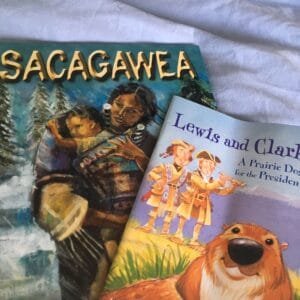 Lewis and Clark and their exploration of the American West is a historical story almost every child learns, but an awful lot of them think this story is boring. The first part of fixing this is finding quality books to read on the topic. This means we have branched beyond history into literature. Reading comprehension and vocabulary are instantly included in this lesson in a quality book.
Lewis and Clark and their exploration of the American West is a historical story almost every child learns, but an awful lot of them think this story is boring. The first part of fixing this is finding quality books to read on the topic. This means we have branched beyond history into literature. Reading comprehension and vocabulary are instantly included in this lesson in a quality book.
Add Some Science
Next, let’s really learn about what the American West looked like during this journey. This is an opportunity to learn about animals, biomes, and weather. All of that is usually separated into the subject of “science.” While we are at it, we can also trace their journey on a map, and include geography in our lesson.
Language Arts
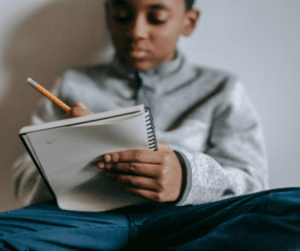 Lewis and Clark were asked to write and send reports back to President Jefferson. So, this creates an ideal opportunity for our student to do some writing that is both creative and factual. They can create their own report and put it in a letter for President Jefferson. You may even want to pause and review that President Jefferson is the same Thomas Jefferson who wrote the Declaration of Independence. You can even do a side quest to review what that is if your student has forgotten.
Lewis and Clark were asked to write and send reports back to President Jefferson. So, this creates an ideal opportunity for our student to do some writing that is both creative and factual. They can create their own report and put it in a letter for President Jefferson. You may even want to pause and review that President Jefferson is the same Thomas Jefferson who wrote the Declaration of Independence. You can even do a side quest to review what that is if your student has forgotten.
Arts and Crafts
Along with their reports, Lewis and Clark needed to sketch and draw the animals and places they saw. This is a great chance to add art to their education. Maybe you live somewhere where you can go see prairie dogs or bison and can take your student to observe those creatures. You can bring sketch pads and let everyone try drawing them. Talk about how you would describe these animals to someone who had never seen them before. What would be important to note? Size? Color? Temperament? Our art class has now looped back to touching on what makes a good report and biology.
P.E.
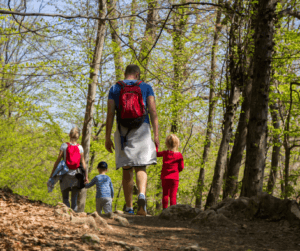 We can also include some physical education by taking a hike. Try to find somewhere to hike that is completely surrounded by nature. Get your student to imagine what it would be like to have no other people around for miles. Have a picnic and do some more sketching before hiking back.
We can also include some physical education by taking a hike. Try to find somewhere to hike that is completely surrounded by nature. Get your student to imagine what it would be like to have no other people around for miles. Have a picnic and do some more sketching before hiking back.
Social Studies and Digging Deeper
Now, if you remember the story, Lewis and Clark were not alone. They were part of a group. The next most famous member of their group is Sacagawea. Sacagawea was a young Native American who acted as a guide and translator for the expedition. She did it all with her baby in tow. Without her, Lewis and Clark would probably not have been successful on their journey. She is the jumping-off point for learning a wide variety of social studies lessons.
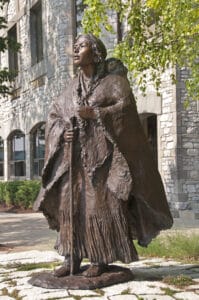
Sacagawea by Glenna Goodacre, Dedicated May 14, 2002. Lewis and Clark Community College.
Your student could learn about Native Americans, specifically the Hidatsa or Shoshone people, or dive deeper into her story and discuss women’s rights at the time. Sacagawea was married to a French Trapper named Toussaint Charbonneau, who had moved there while the land was owned by France. Take a moment and find both France and Canada on a map, you just did world geography!
Sacagawea gave birth to her son, and just two months later was traveling with the expedition. The presence of her and her baby showed that they came in peace to the other Native American people they encountered. If your student is mature enough, you can debate the ethics of bringing along a young mother and her tiny baby on such an expedition. Do you think they would have brought a white woman and her baby? Now we are teaching ethics and philosophy, subjects often reserved for college, but as homeschoolers, we often reach beyond the typical subjects taught to children.
Math
To be sure we catch all the typical subjects, we can throw in some math now. You can have your student add up the miles Lewis and Clark traveled. They can research how long the trip took and figure out their rate of travel. Then, research how long it would take to get from the east coast to the west coast today. Compare options with planes, trains, and buses. Once again, we have an opportunity to do some critical thinking and relate this historical story to modern life. Again, we are thinking critically about history and the advances of modern travel.
That’s a Unit Study!
What do you think? Is this a better way to learn than separating every subject? I think so. With the field trips included, this “lesson” might take a week or two, but the learning is going so much deeper than what our public schools can provide. This lesson plan gives students an opportunity to put history, science, language arts, math, art, and more into perspective. Instead of seeing them as separate things, the student can see how they all intersect and matter.
If you would like to start teaching your child this way, please visit our shop! All my programs teach with this method. The lesson above is included in our Creation of a Country program.
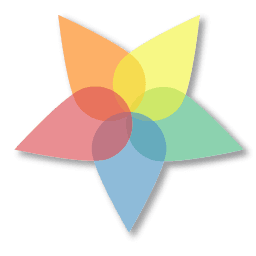




0 Comments